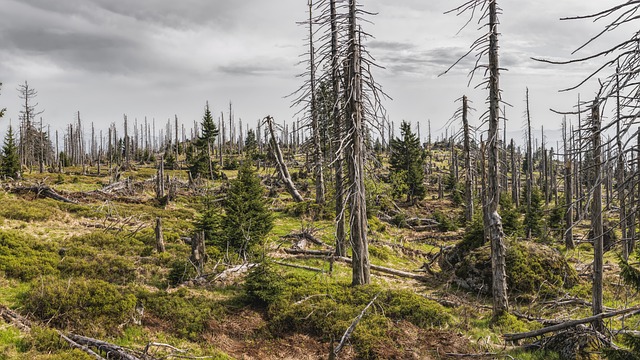A Planet in Peril: Navigating the Labyrinth of Global Environmental Problems
The Earth, our only home, is facing a multifaceted environmental crisis, one that transcends borders and impacts every facet of life. From the melting ice caps to the rising seas, from suffocating air pollution to the extinction of countless species, the signs of environmental degradation are stark and undeniable. This blog post will delve into the intricate web of global environmental problems, exploring their causes, consequences, and the critical need for collaborative action.
The Intertwined Threads of Environmental Degradation:
The tapestry of global environmental problems is woven from numerous interconnected threads:
* **Climate Change:** The most pressing issue of our time, driven by the relentless rise in greenhouse gas emissions, primarily from burning fossil fuels. Its consequences are far-reaching: more frequent and intense heatwaves, droughts, floods, and storms; rising sea levels threatening coastal communities; and disruptions to global food systems.
* **Biodiversity Loss:** The sixth mass extinction event is underway, driven by habitat destruction, pollution, and climate change. This loss of biodiversity undermines ecosystem services crucial for human well-being, such as pollination, water purification, and climate regulation.
* **Pollution:** Air, water, and land pollution are widespread, stemming from industrial activities, agricultural practices, and unsustainable consumption patterns. Air pollution poses health risks, while water pollution contaminates our drinking sources and threatens aquatic life. Land pollution degrades soil fertility and poses risks to human health.
* **Deforestation:** The relentless clearing of forests for agriculture, logging, and urbanization has dire consequences. Forests act as carbon sinks, absorbing CO2, and their loss exacerbates climate change. Deforestation also decimates biodiversity and disrupts water cycles.
* **Resource Depletion:** Overexploitation of natural resources, driven by rapid population growth and consumerism, is leading to resource scarcity. This includes depletion of fossil fuels, freshwater sources, and mineral reserves, jeopardizing economic growth and societal stability.
The Consequences We Can No Longer Ignore:
The consequences of these environmental problems are multifaceted and far-reaching:
* **Health Impacts:** Air pollution contributes to respiratory illnesses, cardiovascular disease, and cancer. Water contamination leads to waterborne diseases, while land degradation can expose communities to harmful chemicals.
* **Economic Impacts:** Climate change disrupts agriculture, infrastructure, and tourism, leading to economic losses and migration. Resource scarcity can trigger conflicts and social unrest.
* **Social Impacts:** Displacement from climate-related events and resource depletion can lead to social upheaval and conflict. The most vulnerable communities, often located in developing countries, bear the brunt of the environmental burden.
* **Global Security Impacts:** Environmental degradation can exacerbate existing geopolitical tensions and create new threats. For example, resource scarcity can lead to conflict, while climate change can increase the frequency and intensity of natural disasters, requiring international humanitarian responses.
Navigating Towards a Sustainable Future:
Addressing these intertwined global environmental problems requires a paradigm shift – a move towards sustainable development that prioritizes environmental protection while ensuring economic growth and social equity. This requires a multifaceted approach:
* **International Cooperation:** Global environmental problems demand global solutions. Collaborative efforts are crucial to achieve meaningful progress, involving nations, businesses, and communities.
* **Technological Innovation:** Investing in sustainable technologies, such as renewable energy sources, energy-efficient infrastructure, and carbon capture technologies, is vital to mitigate environmental impacts.
* **Policy and Governance:** Strong environmental regulations and policies, coupled with effective enforcement, are essential to incentivize sustainable practices and hold polluters accountable.
* **Individual Action:** Every individual can make a difference by adopting sustainable lifestyles, reducing their environmental footprint, and advocating for policy changes.
The Urgency of Action:
The Earth is sending us urgent warnings. We are at a crossroads, with the choice to either continue down a path of unsustainable practices or embark on a transformative journey towards a sustainable future. The time for inaction is over. We must act collectively, decisively, and with a sense of urgency to protect our planet and ensure a habitable future for generations to come. The responsibility rests on all of us – governments, businesses, individuals, and communities – to work together and create a world that thrives in harmony with the natural world.
